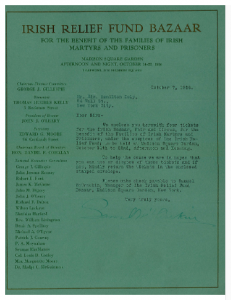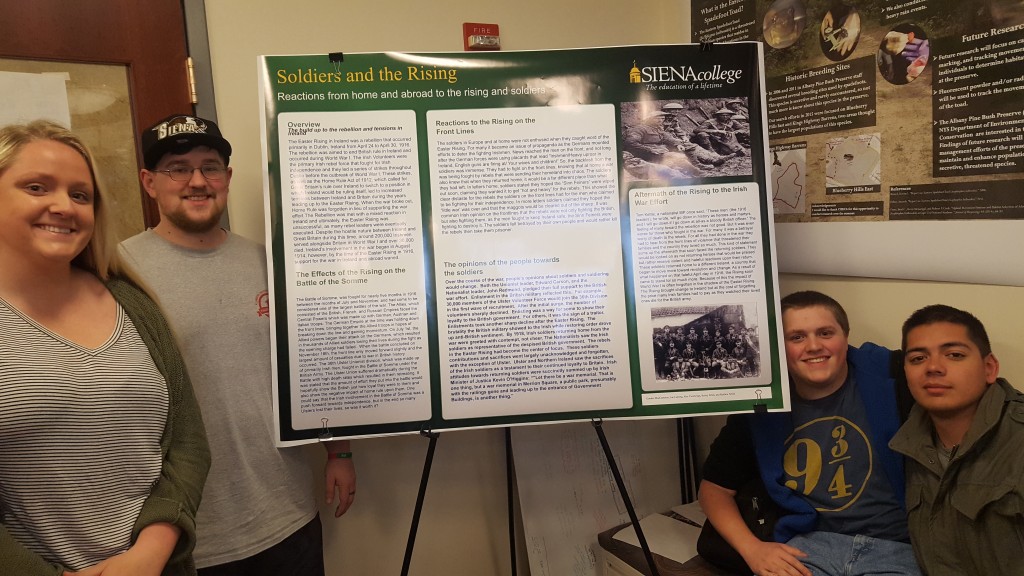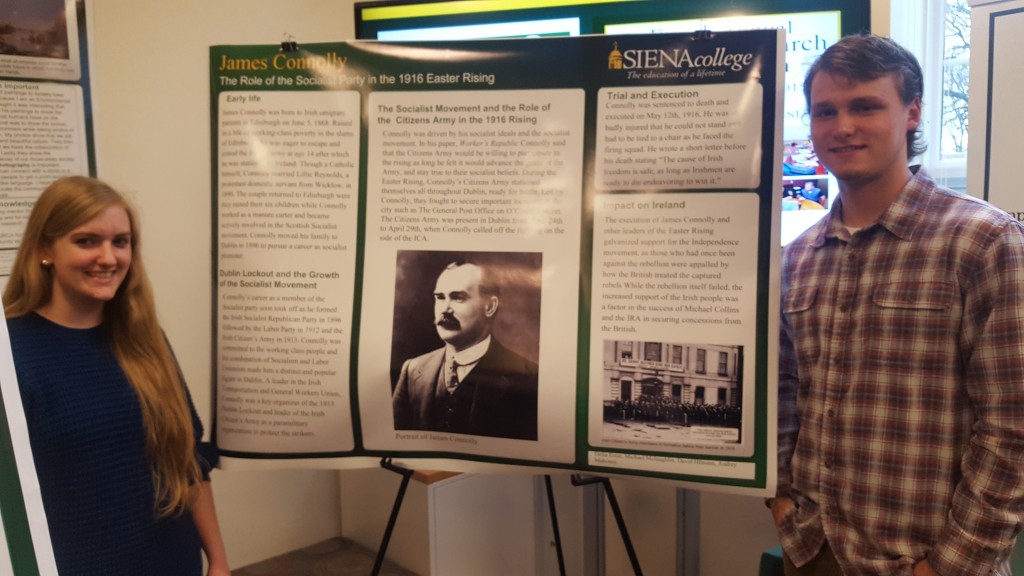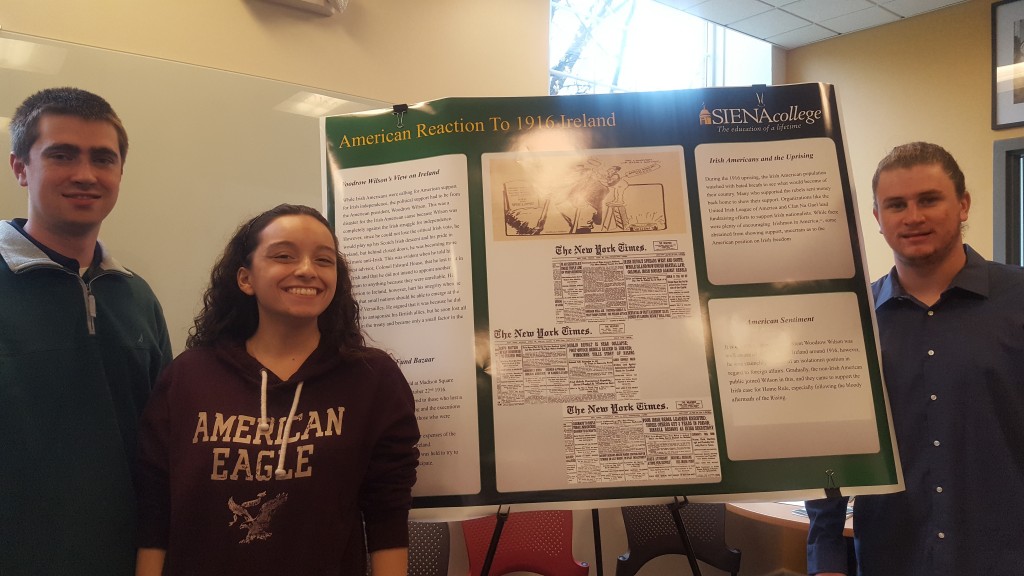Dr. Karen Sonnelitter
Assistant Professor of History
Siena College
@ProfSonnelitter

Teaching Irish history at a small Franciscan college in upstate New York can present certain challenges. My students are enthusiastic to learn about Irish history but frequently have little background knowledge on the subject. The biggest challenge by far is integrating undergraduate student research into my classes. Siena College has a wonderful library, but it simply does not have a large collection of primary sources on Irish history. Fortunately, this semester my students were able to benefit from a wealth of digitized primary sources that have been made available through the Letters of 1916 project.
Since I was teaching the History of Ireland in the spring of 2016, it only seemed natural to in some way focus the class on the events of 1916. While most of our class meetings were focused on covering the broad scope of Irish history. Early in the semester we covered the basic events of the Easter Rising and discussed possible research topics. Students were then split into groups and each group chose one aspect of Ireland in 1916 to research throughout the semester. They were required to rely on primary sources for their findings. They worked with myself and a librarian Sean Conley to identify some initial sources and refine their topics. This is where digital archives like the Letters of 1916 project were invaluable. I provided links to the Letters of 1916 and other similar digital archives, such as the Military Services Pensions Collection and the Diary of Mary Martin, on the course website. The goal was not to locate primary sources but to see what they could discover in the sources available to them.

Even a few years ago it would not have been possible for my students in Albany, NY to engage in this type of research. The primary sources for Irish history that existed in our library were memoirs or carefully curated edited collections. My colleagues who teach American history and especially New York history have a wealth of primary sources and archives that they use to introduce their students to primary source research. By using digital archives, like the Letters of 1916, I was able to introduce my students to the experience of combing through an archive, deciphering handwriting, finding hidden treasures amongst a bulk of material. It allowed my students to research topics related to the social and cultural history of Ireland in 1916 topics that few of them knew anything about beforehand.

The groups chose topics that varied from some of the leaders of the Easter Rising James Connolly and Joseph Plunkett, to the American reaction to the Easter Rising, to the role of Irish soldiers in the British Army, and their reaction to the Rising. Each group to varying degrees utilized the Letters of 1916 project to provide insight into their topics. One group of students worked on the reaction of Irish soldiers in the British army of World War I and their reaction to the Easter Rising. Letters home from a solider named Peter Mooney were according to them, “crucial in working out how the soldiers felt” about the events of the Easter Rising. Another group focused on American reaction to the Easter Rising, they discovered letters related to the Irish Relief Fund Bazaar. This gave them insight into how ordinary Irish-Americans responded to the Easter Rising. Students who researched James Connolly were fascinated to read the note he sent to Eamonn Ceannt on Easter Sunday.
Halfway through the semester students presented on the primary sources they had found so far and how their research was progressing. In the last week of classes they produced detailed research posters which we presented to the campus community in our Ireland in 1916 Poster Session. The great value of this collection is that it allowed my students to understand for themselves something about the lives of ordinary people in 1916 Ireland. Through these letters Irish history becomes more than just a series of dates, it becomes about people- the variety of experience they had during 1916 and their different reactions to the Easter Rising.



